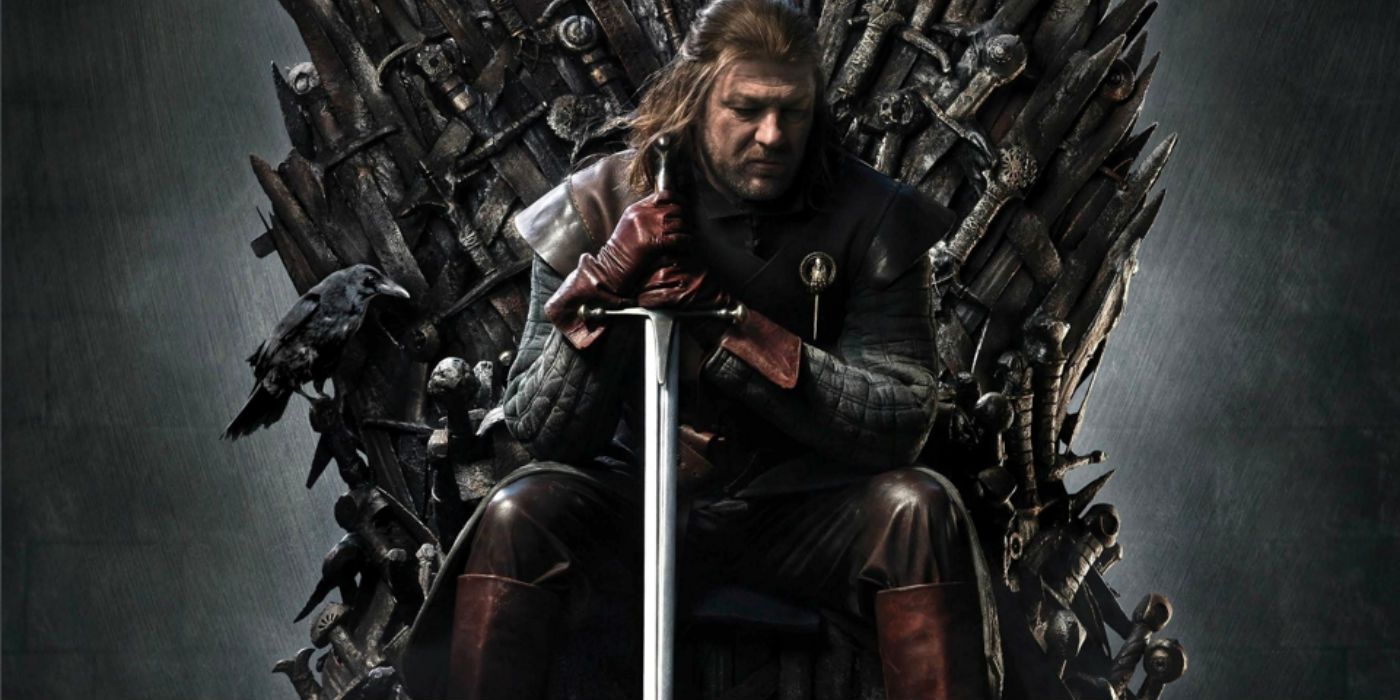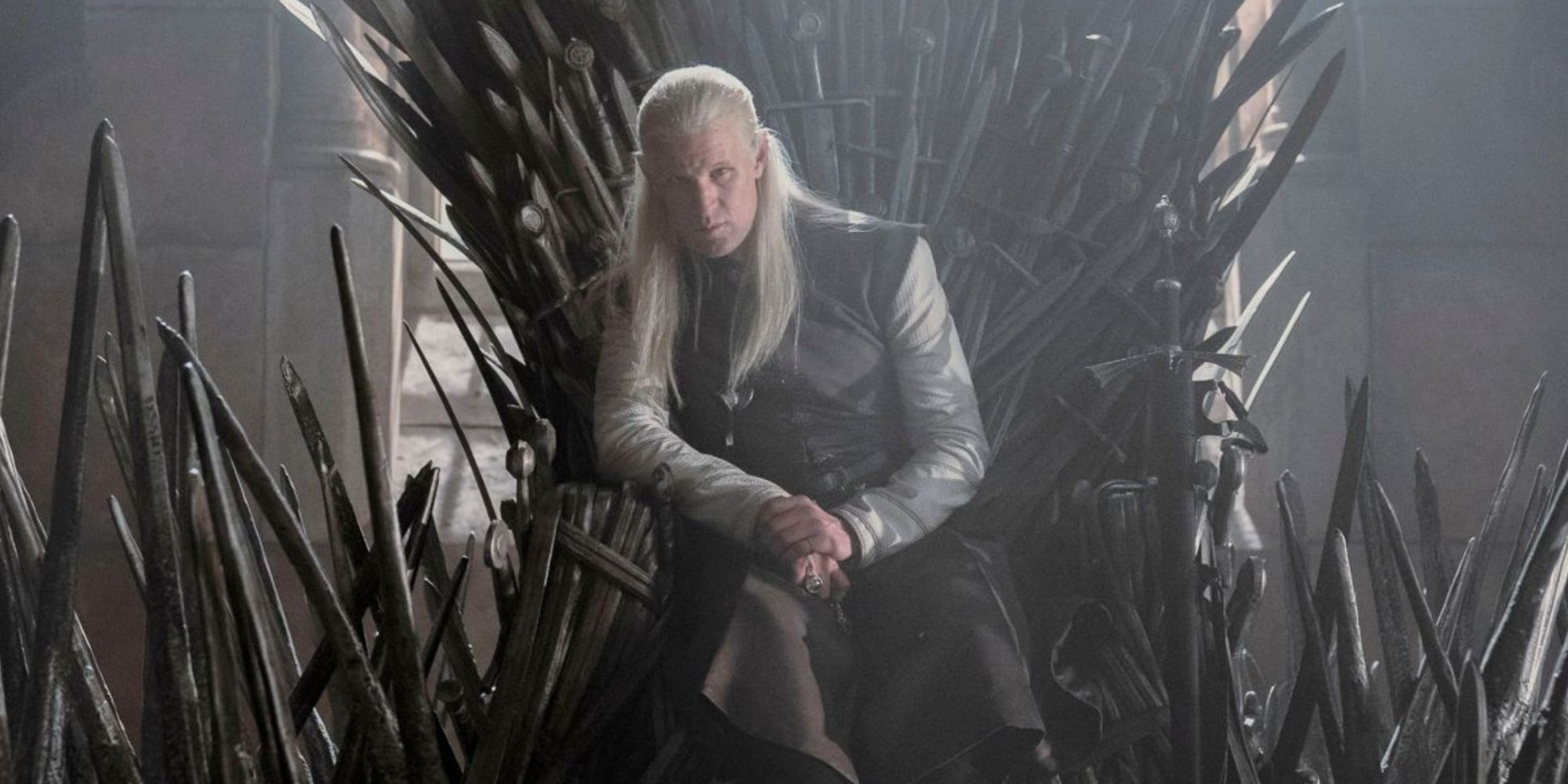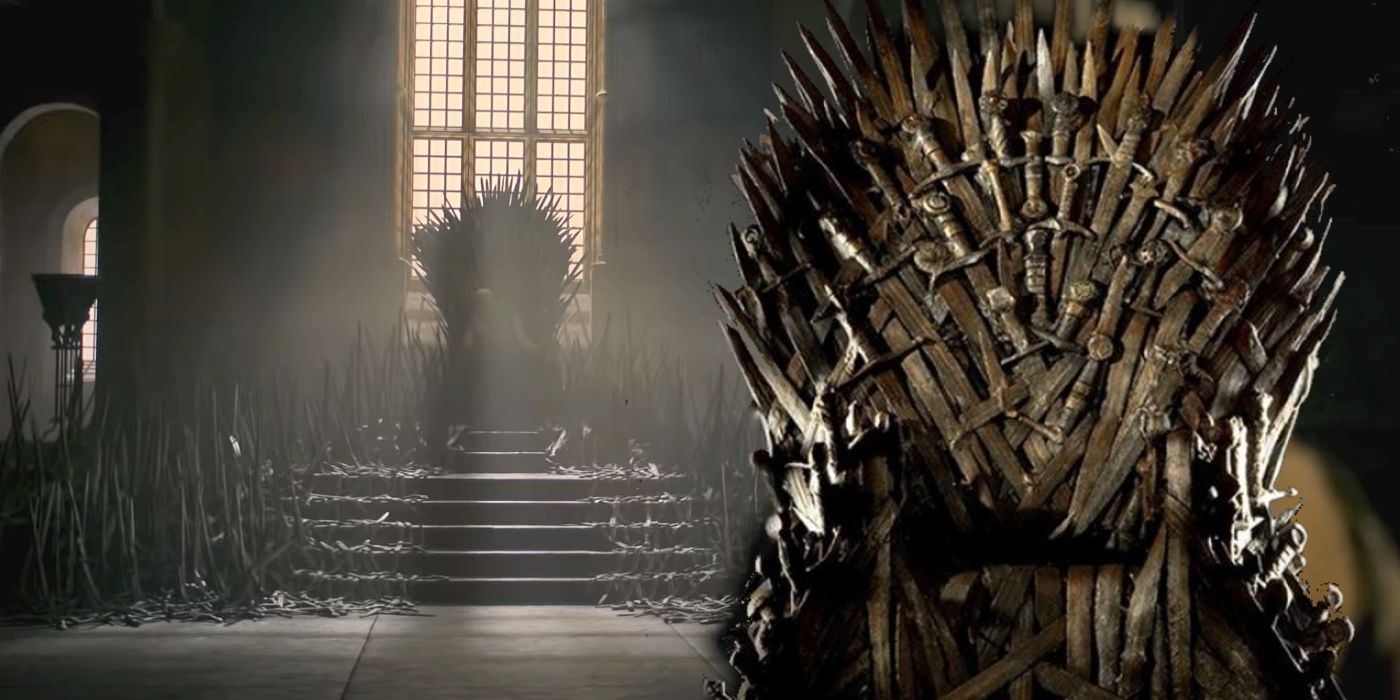The Game of Thrones universe is as sprawling as it is violent and is complete with everything from epic battles to impactful betrayals. But as the title has suggested, many of these dark moments were fueled by nothing short of power and the power that could be obtained by an object known as The Iron Throne. Throughout the books and the television series, The Iron Throne represented everything that every kingdom fought for and the hopes that by claiming it, they would become the ruler of The Seven Kingdoms.
Whether read or viewed, the importance of The Iron Throne can't be understated. While the chair made of countless swords carried its own intimidating image, it was far more imposing in written form. Author George R. R. Martin revealed its true scale on The Late Show with Stephen Colbert, which raises a question regarding the series and why the throne is so massive in books but much smaller on television.
George R. R. Martin Explains The Iron Throne's Size
While discussing the world of fantasy with George R. R. Martin, Stephen Colbert asked the author to explain further the importance of his upcoming book, The Rise of the Dragon by Martin, Elio M. Garcia Jr. and Linda Antonsson. The book -- which is a detailed look at the Targaryen dynasty -- will be unlike anything shown before. It's more than a story with words as it also features artistic looks at the many set pieces of the Game of Thrones universe. This also included a look at The Iron Throne, which was more than a chair made of hundreds of swords as it was an elevated throne built upon a staircase of swords that towered above all others by at least 10 ft. However, while House of the Dragon expanded on the throne's scale more, it could still not match what was in the books.
According to Martin, the main reason the 10-foot throne couldn't be adapted to the scale described in the books was for a logistical reason that was largely unavoidable. Martin described that "When we actually got to making Game of Thrones, well, we didn't have a sound stage with a tall enough ceiling in order to fit it in there, so they made the one that has become, you know, kind of iconic for Game of Thrones." In the end, while the explanation made perfect sense, especially with a contained budget at the time of the franchise's first episode, it was still a sad reason the throne couldn't be adequately depicted. Nevertheless, what exists now has become iconic in its own right.
The Larger Impact of The Iron Throne's New Height
The set designers did their best with the throne the crew had to work with. The result was a throne that felt like living history, with each sword carrying a violent and bloody story. However, its simplicity also beckoned a chilling thought, even when the throne was much larger in House of the Dragon. For centuries, many have fought and died to sit on this throne for the hope of power. But the simpler the throne became, the more it seemed like a shadow or myth of what it once was.
As shown in the series finale of Game of Thrones, the throne was ultimately destroyed as a symbolic gesture of all the senseless death that surrounded it. But in doing so, it was also evident that this smaller, far less imposing throne had created wars and slaughtered thousands. While its stories were told in a way that it would seem like a 10-foot tall seat was what kings fought over, it was a far less intimidating seat, with that irony adding to its iconography.



